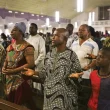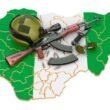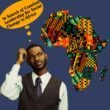Introduction
The historical account of the success of Christianity in South Korea defiles the normal missionary activities of the Westerners. Sebastian Kim declared that “Christianity first arrived in Korea, not through foreign missionaries but a Korean scholar.” Kim contends that to understand the Korean Christianity community’s exponential growth, the Korean peninsula’s socio-political context in the second half of the nineteenth century has to be considered. As far as Kim is concerned, the idea and the notion of the availability of the Bible, offered by some people as being responsible for the spread of the gospel message, is simply a mild tale of the real reason. Kim never questioned the Bible’s distinctive role, but more significantly important, he argues, was the socio-political context of the nineteenth/twentieth century. The oppression of the Japanese, which ended somewhat in the 1940s, and the communist threat from their neighbor in the far north, which escalated into the Korean war of the 1950s, was a significant factor he emphasized.
Furthermore, the unrest and the instability suffered from these two contexts contributed immensely to the unsettling of the South Koreans. Their sense of insecurity was heightened during this period, both nationally and individually. The country’s economy has collapsed because of political instability, creating endemic poverty among the people. Not knowing where to turn, and with the inability of the Korean indigenous religions to provide a way out. The Korean populace turned their attention to searching for salvation, a readily available hope in the Christian gospel message. Therefore, beginning from 1903 to 1907 series of revivals took place, culminating in the historic 1988 crusade preceding the hosting of the Seoul ’88 Olympics games. The primary aim of these crusades and revivals was to save souls. The church leaders reasoned that once people’s souls are saved, it won’t be challenging to care for the numerous ills confronting them as a society. City-wide evangelistic revivals began in Pyongyang in 1907 and the Million Movement of 1910. The fire of revival was sustained by Kil sonju, Kim Iktu, and Yi Yongdo across time all through the Japanese occupation. The tempo was further intensified after the Korean War in massive evangelistic campaigns that reached their climax in the world evangelization Crusades of 1980 and 1988.
Without much ado, these revivals and evangelistic campaigns played a massive role in the growth and rise of Korean Pentecostalism. Many scholars are asking why the gospel message was so appealing to the Koreans and not to the Japanese or their close neighbor North Korea? The response of Timothy Lee to this burgeoning question is quite remarkable. For him, “the turbulent course of modern Korean history, in which traditional religions were discredited and individual Koreans were often driven to despair and disorientation, arousing their salvific impulse and motivating them to search for a new moral order, such as the one offered by evangelicalism” was a significant factor recognized for being accountable for the rise of Christian faith in South Korea. Similarly, he postulated “the way evangelicalism became positively identified with the Korean nation and participated in Koreans’ collective aspirations and sentiments” was another veritable factor.
My aim in this essay is for me to demonstrate, through historical narratives, how the rise of Pentecostalism in South Korea interacted with the socio-political context of the different eras, thereby creating a unique socio-political reality for the people different from the lived experience of their closest neighbors such as Japan and North Korea.
Understanding the Korean Revivalism
One vital key that unlocks the understanding of the success of the Korean Churches is revival. Evangelistic revivals of different magnitudes at different times in Korea are distinctive features of the Korean Churches. Young-Hoon Lee helped simplify our comprehension and put these revivals into perspective by categorizing them into five distinct periods or phases of twenty years each. He argues that during these periods, the Holy Spirit manifested Himself with a unique identity reflective of the political, social, and religious situation of the period.
The First Period 1900 – 1920
During this period, Korea was succumbing to the Japanese occupation. The era was marked by turmoil both politically and socially for the people. There was a tremendous religious vacuum at this moment, which made many Koreans lose their spiritual direction. The only viable option for hope and succor for the Koreans was Christianity. Repentance, a replicate model of the early church in the Acts of the Apostles, was the main theme of the revivals of the era. The main emphasis was on personal salvation and personal experience, a tendency that is still pervasive in Korean church life today.
The Second Period 1920 – 1940
This was the time in history when Korea was subjugated and made to toil under the Japanese occupation. The era witnessed severe persecution from the Japanese, mainly due to the Christians participating in the declaration of Independence of March 1919. Amid this devastating experience, the Korean Christians found comfort in the three distinct Holy Spirit movements that emphasize eschatological faith, faith in divine healing, and faith in mystical union with a suffering Christ. The urge for the development of mystical experience was heightened during this period.
The Third Period 1940 – 1960
Finally, the Koreans were liberated from the Japanese occupation during this era. But notoriously, Timothy Lee also regarded the era as a period of confusion. When the Korean people were supposed to be celebrating their freedom from Japan, they were suddenly attacked and invaded again by Communist North Korea, which led to the Korean war that lasted for three years, leaving them socio-politically devastated. The church lost its leadership influence in society because of schisms within the church ranks. Bureaucracy and legalistic disposition became the norms, whereby the church began neglecting the spiritual needs of the people. In addition, to the continuous schism that was going on in the churches, “heretical” sects and syncretic religions also surfaced during this period. It was in this era that Pentecostalism blossomed. Its success was because it gave people hope and strong faith based on their emphasis on personal spiritual experiences, which was lacking in most other churches.
The Fourth Period 1960 – 1980
This period witnessed the explosive and exponential growth of the church. This growth was occasioned by the constant military coups and student protests, which created a tense and insecure political system. Amid this chaos, the people reliably found solace in Christianity. This era also ushered in the “minjung” theology movement, whose primary concerns were about the oppression of the factory workers even in economic prosperity.
The Fifth Period 1980 – 2000
During this period, the Pentecostal/charismatic movements spread across all the different denominations in Korea, resulting in many mega-churches in the cities. In this era, David Yonggi Cho’s church became a jewel church to behold. His church at the end of 1994 could boast of 700 000 in membership. His church brought a lot of global attention to the Christian community of Korean people.
In a nutshell, the Korean church as we know it today began as a repentance movement, developing later into a movement that craves mystical union with Christ. The movement matured into a recognizable charismatic movement conducting large-scale crusades and revival. Along the line, the liberal wing, sensing injustice in the society and the lopsided view of the Pentecostal/charismatic leaders, developed a unique Korean liberation theology called “minjung” theology to caution against the gross oppression and mistreatment of factories workers. The churches in Korea were furthermore engulfed in Pentecostal flame. Pentecostalism, finally becoming pervasive, turned into charismatic movements in all churches, with David Yonggi Cho’s church blazing the trail.
The Rise of Pentecostalism in Korea
Pentecostalism as a unique faith was first brought to Korea by Mary C. Rumsey in March 1928. She was a missionary to Korean society with a peculiar Pentecostal background. Initially, she was of the Methodist background and participated in the Azusa Street revival meeting in 1906. She received a clear call to bring the gospel message to the Korean as a missionary, a call she yielded unto about twenty years later.
In the Korean experience, Pentecostalism is hard to single out as a separate movement because the movement is highly pervasive in the entire Korean Christian Spiritual landscape. Timothy Lee consistently re-emphasized this notion in his book “Born Again: Evangelicalism in Korea”. He recalls that from 1950 – 1988, the Korean Churches underwent remarkable growth within this period. The number of protestants in Korea roughly doubled just about every decade, and from 1950 – 1985 the growth was more than tenfold. He declared that “by the middle of the 1980s, Korean evangelicalism had become a record holder in several categories of the church growth”. Similarly, he observes that by 1984, Korean evangelicalism not only had the world’s largest single church – Yoido Full Gospel Church with 350,000 members – but also had the world’s first- and second-largest Presbyterian churches. By 1985, Korean evangelicalism also had the world’s largest Baptist church. The growth of these mega-churches continued, and a new one-shot up so that by the end of 1992, according to the Christian magazine world, twenty-three of the fifty largest churches in the world were located in Korea- including the largest Yoido Full Gospel Church, (600,000 members), the second largest (Nambu Full Gospel Church in Anyang, 105 000 members), and the seventh, -ninth, and tenth-largest churches.
Many other like-minded scholars like Timothy Lee have wondered what could have caused the phenomenal growth of the Korean churches, particularly, when put into context, that this was happening barely after the years following the Korean war? The rise of the Korean Pentecostal/charismatic movement can only be understood by situating it within the purview of the political and socio-economic context that produced it. We will look further into that in the next section.
Pentecostal/Charismatic Movement and the Political and Socio-Economic Context of South Korea
Timothy Lee observes that South Korea was Transformed from a poverty-ridden country to one of the world’s leading economic superpowers in just one generation. This observation was against the backdrop of the Japanese oppression and successive Korean war of the early 1950s, which led to instability of the political system with fragile democracy that was consistently ruptured through autocratic rules, occasioning student revolts and protests. There was a total collapse of public order with a series of military coups and counter-military coups, which raised the concerns of the Korean people resulting in substantial social tension. The military rulers who came into power at different times to validate and legitimize their government often made anti-communism their official ideology and worked tirelessly to exploit it, gaining the people’s sympathy.
Timothy Lee, Summed it up by writing that “the political instability, oppressive government, and the fear of communism combined to create in South Korea a tense atmosphere of unpredictability, insecurity, and stress, an atmosphere that provoked religious – more specifically, salvific – impulses.”
The religious atmosphere provoked in the Korean context could be likened to the similar atmosphere narrated by Donald Miller and Yamamori Testsunao in their book “Global Pentecostalism: The New Face of Christian Social Engagement.” In this narrative, young adults in an all-night prayer meeting in a Pentecostal church in Kampala were praying for the cleansing of their sinful nature, remembering their families, neighbors, and government as they prayed along. They intended to pray down the kingdom of God on the earth, which must begin with them individually.
The Korean churches, too, believed that by getting their entire people saved, they would solve some of the societal problems confronting them as a nation. In the case of the Kampala prayer meeting, the authors were interested in seeing the connection of this kind of atmosphere with the creation of civil society. They were interested in knowing if people would leave such a prayer meeting better able to serve humanity than they entered? This scenery perfectly resonates with Durkheim’s classic connection between religion and society. Durkheim believes:
• Every group of people requires ritual activities to hold the community together.
• The relationship between community and religion is most evident among indigenous societies, where ritual activities celebrate collectively held values.
• These collective values are embodied in sacred symbols that represent the group.
• What is viewed as sacred is not the symbol itself but the collective values of the group.
• The social function of religious rituals is to reinforce the shared value of the group.
When the ritual is well performed, like the all-night prayer meeting, the authors argue that the group members will experience Durkheim’s notion of “collective effervescence”- a feeling of “something more” which the authors interpreted to be God or the divine, which in reality Durkheim posited to be merely the collective values of the group. Likewise, in the case of South Korea, the explosive growth and spirituality witnessed is the manifestation of the Korean people’s collective values.
This notion is furthermore contextualized by Amos Yong, who framed the moral and cultural conservation of South Korean Pentecostalism within a Lutheran two kingdoms model that depicts the church as being called to cooperate and, under certain circumstances, be subordinated to the ruling government. According to the Lutheran teaching, spirit-filled Christians are not expected to participate in a protest against dictators so long their government does not hinder the activities of the church. Lutheran teaching projects this as a sure mark of patriotic nationalism in which the ideas of church growth, revivalism, and South Korea as a chosen nation are all working for the common good.
To juxtapose Korea’s economic advancement vis-à-vis religious spirituality, we must turn to Max Weber. According to Weber, religion plays a massive role in developing capitalism, which is deeply rooted in two key concepts of the Protestant Reformation.
First was Martin Luther’s notion of the “calling,” which postulates equal values for all professions, be it religious or secular. The second was John Calvin’s notion of being saved by God’s grace alone. This means no one could merit eternity by good works. Calvin argues that those who will make heaven have been predestinated by God. This will raise anxiety among the faithful, causing them always to ponder where they would spend eternity? Calvin suggested that the way to deal with the anxiety is to show evidence of election by how one lives! Weber argues that since clergy link honest and disciplined living with the sign of election, church members would avoid frivolous behavior. The “elect” would most assuredly spend time working very hard at whatever God has called them to do.
Consequently, the individuals who embrace these puritan work ethics accumulate more money than they can spend.
Demographic Change and Korea’s Economic Transformation
The phenomena of rapid growth and economic prosperity of South Korea have baffled many scholars for a long time. Some have wondered how a country in a deep socio-political turmoil could manage to scale unimaginable height economically, amiss political chaos, and do so within the context of great revivalism.
Carter J. Eckert observes that
A per capita GNP of about $100 in 1963 versus a figure of nearly $5,000 as the year 1990 began; a war-ravaged Seoul of gutted buildings, rubble, beggars, and orphans in 1953 versus the proud, bustling city of 1988 Summer Olympics with its skyscrapers, subways, plush restaurants, boutiques, first-class hotels, and a prosperous middle class; a country abjectly dependent on foreign aid in the 1950s versus a 1980s economic powerhouse – a factory to the world for everything from clothes, shoes, and electronic goods to steel, ships, and now even automobiles and semi-conductors.
Timothy Lee argues that an economic feat of such magnitude could not have happened without a significant change in the nation’s demography. For instance, he asserts that between 1960 and 1990, South Korea’s rapid industrialization was a response to rapid urbanization. He conceded the urban population growth to the pressure of migration from the countryside. He noted that Seoul and its nearby metropolis were substantially affected by this in-migration. Timothy Lee criticizes the impact of such rapid and vast urbanization on Korean society. For him, such colossal change only created a scarcity of non-disabled men and women to do farming in the countryside.
On the other hand, the cities have become overpopulated, with lots of traffic congestion. There is also a housing shortage, leading to the escalation of real estate values. Subsequently, there will be excess requirements for unskilled and dislocated people searching for means of livelihood. The three and half decades after the Korean war were characterized explicitly by many unrest and uncertainties. To deal with this stress, the people needed salvation. Salvation rhetoric was so prevalent among scholars that many of them attributed the location of the largest mega-churches in Korea’s metropolitan Seoul as the reason for the rise of Pentecostalism/charismaticism after the Korean war.
Minjung Theology – Korean Version of the Popular Liberation Theology
From the 1960s to the 1970s, Korea witnessed a tremendous rise of the “Jaebul” – a family-run mega-businesses. This was so because they enjoyed favorable policies from the government. These so-called family businesses were so successful and dominated the Korean economy that the exploitation of workers gradually set in no time, because of the successes of these businesses and the subsequent economic transformation they have brought to the Korean society. Consequently, many Christian leaders, mainly from the Pentecostal/charismatic circles, ignored this problem, dismissing it as a matter of the “process” of development and focusing more on their movement’s rapid expansion. This term in history, the “jaebuls” and the mega-churches prospered side by side with each other, a development the church leadership misconstrued as church growth having a ripple effect on the Korean economy. This lopsided way of thinking infuriated the liberal theologians, who thought that these “jaebuls” have grown at the expense of the exploitation of the urban poor factory workers, who have become the casualties of the capitalist market.
The church leaders failed to realize that the problem of poverty was not just a personal misfortune but something that was inherently wrong with the structural design of the Korean economy and society. The liberals argued that the poor were not poor because they lacked material goods. They ferociously criticize the exploitation and unjust treatment of factory workers, which had already precipitated the widening gap between the rich and the poor and between employers and the employees as the culprit.
Stemming from this condition, the minjung theology was conceived, capturing the people’s imagination because the theology actively addressed the problem of poverty and exploitation. Minjung theology postulates that the poor are not poor because of any unresolved sinful nature or a lack of right standing with God but of the greediness of the bourgeois and the unjust system of modern capitalism. This situation accounts for why Marxist are not comfortable with the role of religion, including Pentecostalism, in influencing society. Karl Marx reveals that the relationship between the main classes in the society, the proletariat, and the bourgeois, is usually tainted with exploitation. Marx argues that religion functions differently for these two classes. He accused religion of suppressing the people, serving as a drug to keep them from revolting against an oppressive system that produces conditions of poverty. Marx says when the drug of religion is removed, people will have no option but to seek a more just society. Like its cousin liberation theology developed in Latin America, Minjung theology focuses on structural evil. It appropriately challenges the Pentecostals to move beyond individualistic emphases on moral perfection to understand the importance of structural factors limiting human life quality.
Koreanization of Christianity By the Koreans and for the Koreans
After several spates of massive evangelistic crusades, most of which were fully funded by foreigners, especially Billy Graham and Bob Pierce, who repeatedly returned to Korean society, and Bill Bright. The Korean Christian leaders, at this point, felt discontented that Korean revivals were being left in the hand of foreign revivalists. They felt that as Korean Christians, they should have been able to conduct massive evangelistic crusades on their own, without foreign support, addressing their peculiar evangelistic needs in their mother tongue without an interpreter from a foreign preacher. This agitation brewing among the Korean Christian community inevitably, led to the next massive evangelistic campaign, tagged ’77 Holy Assembly for the evangelization of the Nation. This campaign differed from the previous revivals in at least two respects. First, it was a campaign intended to exemplify the Korean brand of evangelicalism.
Sin Hyonggyun, a highly distinguished revivalist and the chairman of the preparation committee for the ’77 Holy Assembly, aptly capture the Koreans’ majority mood by stating:
While leading nightly prayers and meetings for the CCC sponsored Expo ’74, I was asked by participants whether it would be possible to have Korean speakers instead of foreign ones whose message needed to be translated into Korean. Shortly thereafter, I began to wonder if we must always have foreign speakers whenever we hold mammoth gatherings….”
Kim Chinhwan, head of the planning committee, expresses similar view and stated that
It is very important that the speakers for the event be Koreans. Billy Graham (in his 1973 Korean crusade) did not address any of the issues that directly concerned Koreans…this was a big problem. The revival, which is being held on the seventieth anniversary of the Changdaehyon revival, must deal with issues that matter to Koreans, issues like the withdrawal of American troops and peaceful unification.
The views of the two men were reflected in the slogan chosen for the ’77 Holy Assembly Crusade, which states that “to evangelize the nation, by Koreans and only through the Holy Spirit.”
The second difference between the ’77 Holy Assembly and the preceding revivals was that it addressed the Korean people’s sense of national insecurity. Koreans have been consistently paranoid about the possible invasion of the communist. The organizers’ rationale was that if communism were the most significant threat of the hour to national security, the best way to arrest the situation would be to Christianize Korean society. This must be done by engaging Korean Christian revivalists to participate in this task.
Korean Christianity Has Come of Age
At this juncture, Korean society needed to showcase its glory and splendor at the highest level on the world stage. Providentially, there could be no other better opportunity other than the one offered by the 1988 Olympics hosted in the city of Seoul. To the church leaders, they saw the Olympics as a sign of God making a statement about the mantle of world evangelization leadership falling on their prosperous nation. The sense of Korea being the final redeemer nation, charged with the responsibility of taking the gospel across the whole world, was huge. This was evident in one of the crusades organized to usher in the Seoul ’88 Olympics games. David Yonggi Cho, the pastor of the largest church in the world, remarkably declared that
the reason God has made the whole world recognize Korea by reviving its economy and arranging for the Olympics to take place here is that he wants us to use them (the Olympics) as an opportunity to range all over the world and give witness to the Gospel…Therefore Korea, as a nation in this world, as the nation that offers sacrifices at this end of time, must spread Christ throughout the world.
Conclusion
At the turn of the twentieth century, there were only about 1 percent of Korean Christians. Surprisingly, by the close of the century, according to a 1995 survey by the National statistics office of South Korea, the Number of Korean Christians has risen to about 26.3 percent, surpassing Buddhists. By 1995 Buddhists were about 23.3 percent of the population. South Korea is a religiously pluralistic nation where no single religion is supreme in the absolute sense. But if we are to determine “the attainment of wealth, position, honors or the like,” then the belief that perfectly fits into our category in Korean society in the 1990s is no other than the Pentecostal/charismatic movement.
Gallup Korea survey: 53.2 percent of the non-believers surveyed indicated that the protestant church’s influence on society was on the rise, whereas their responses regarding Buddhism and Catholicism were 40.6 and 43.0 percent, respectively. There is no doubt that the Pentecostal/Charismatics in Korea are exerting a significant influence on civil society, politics, and the economy – especially when we juxtapose it with other religions.













Interesting piece